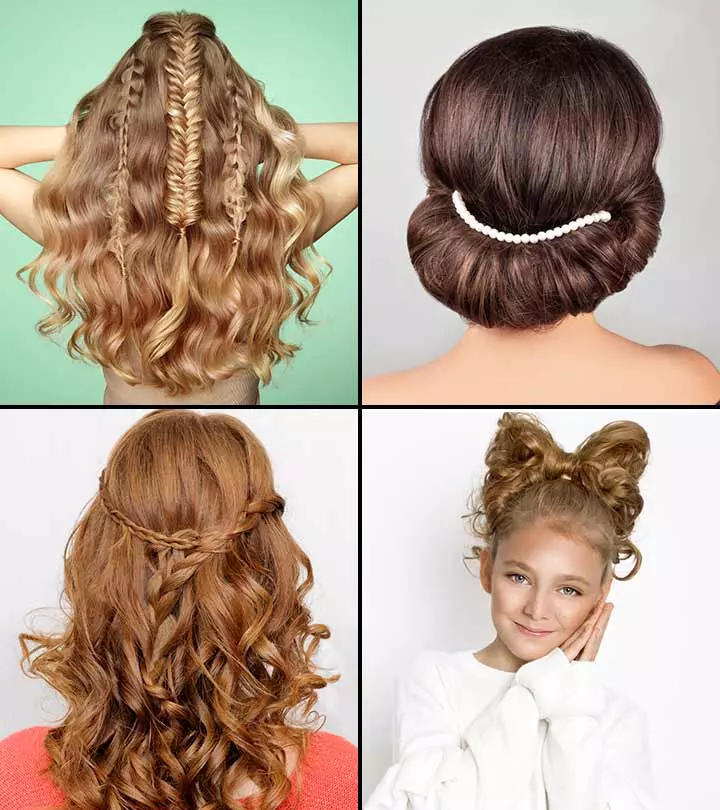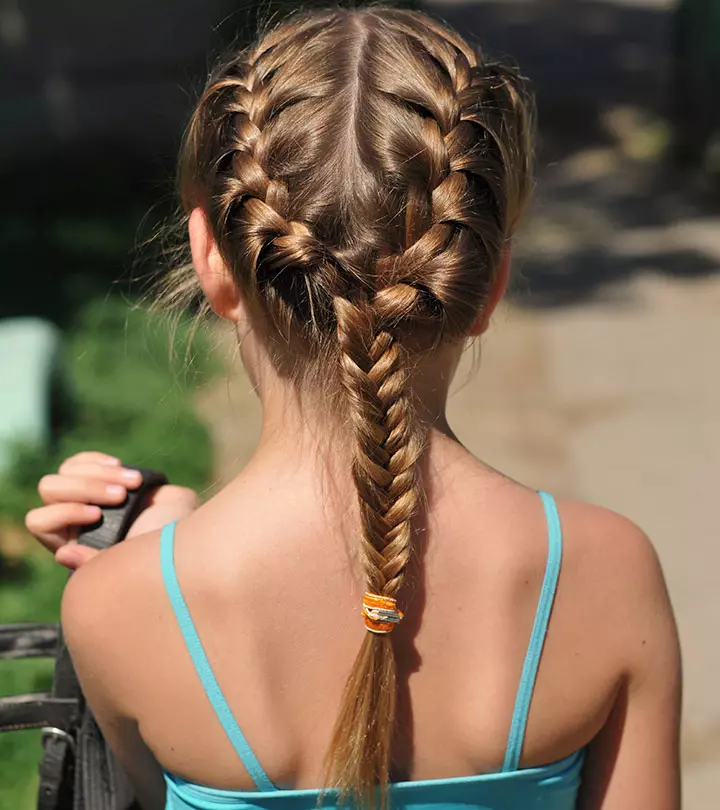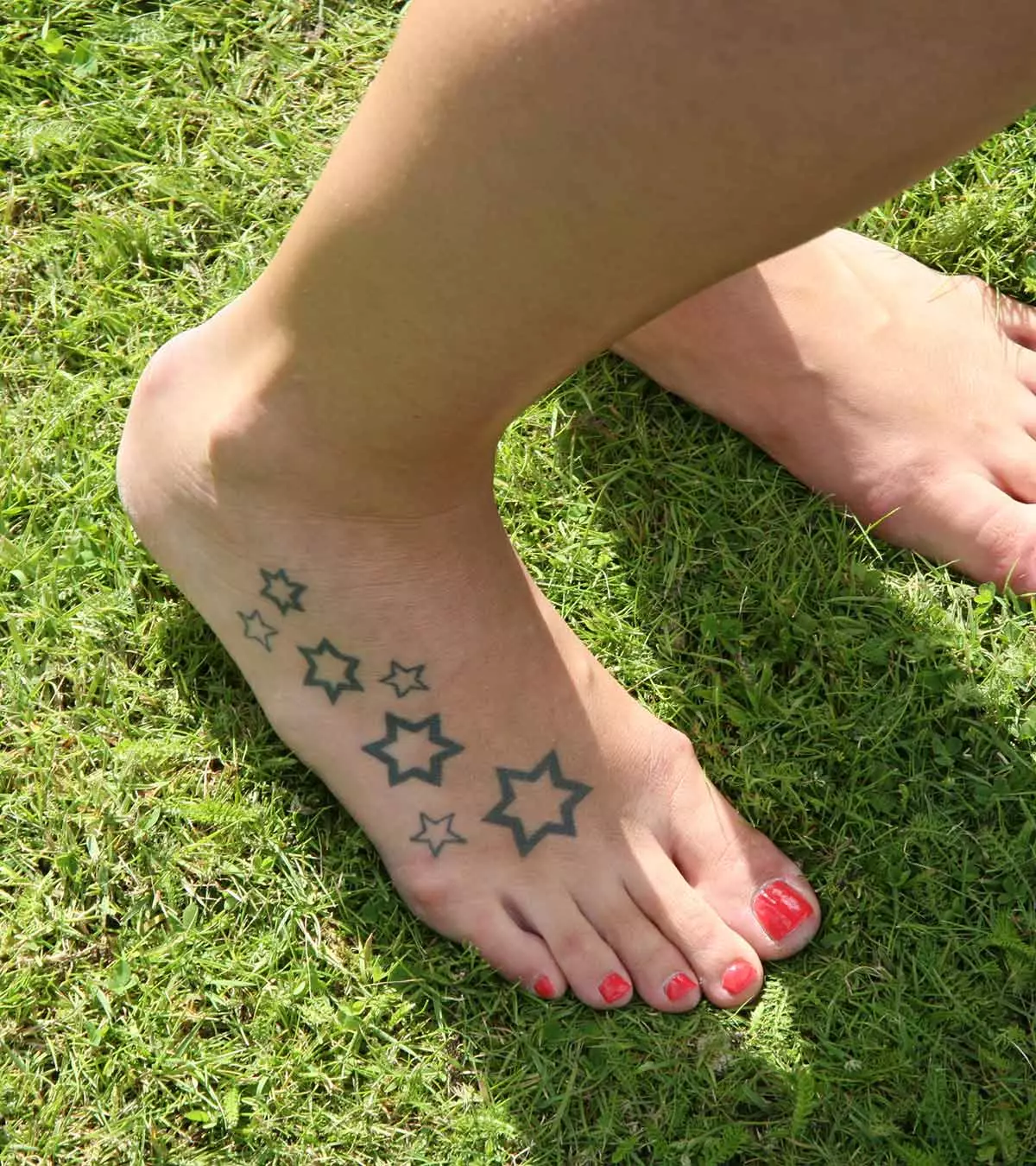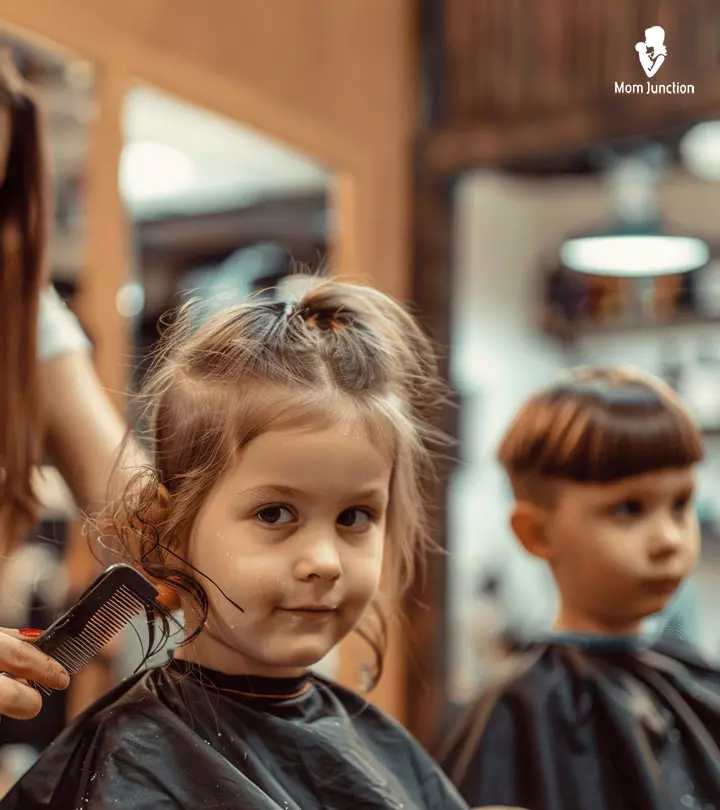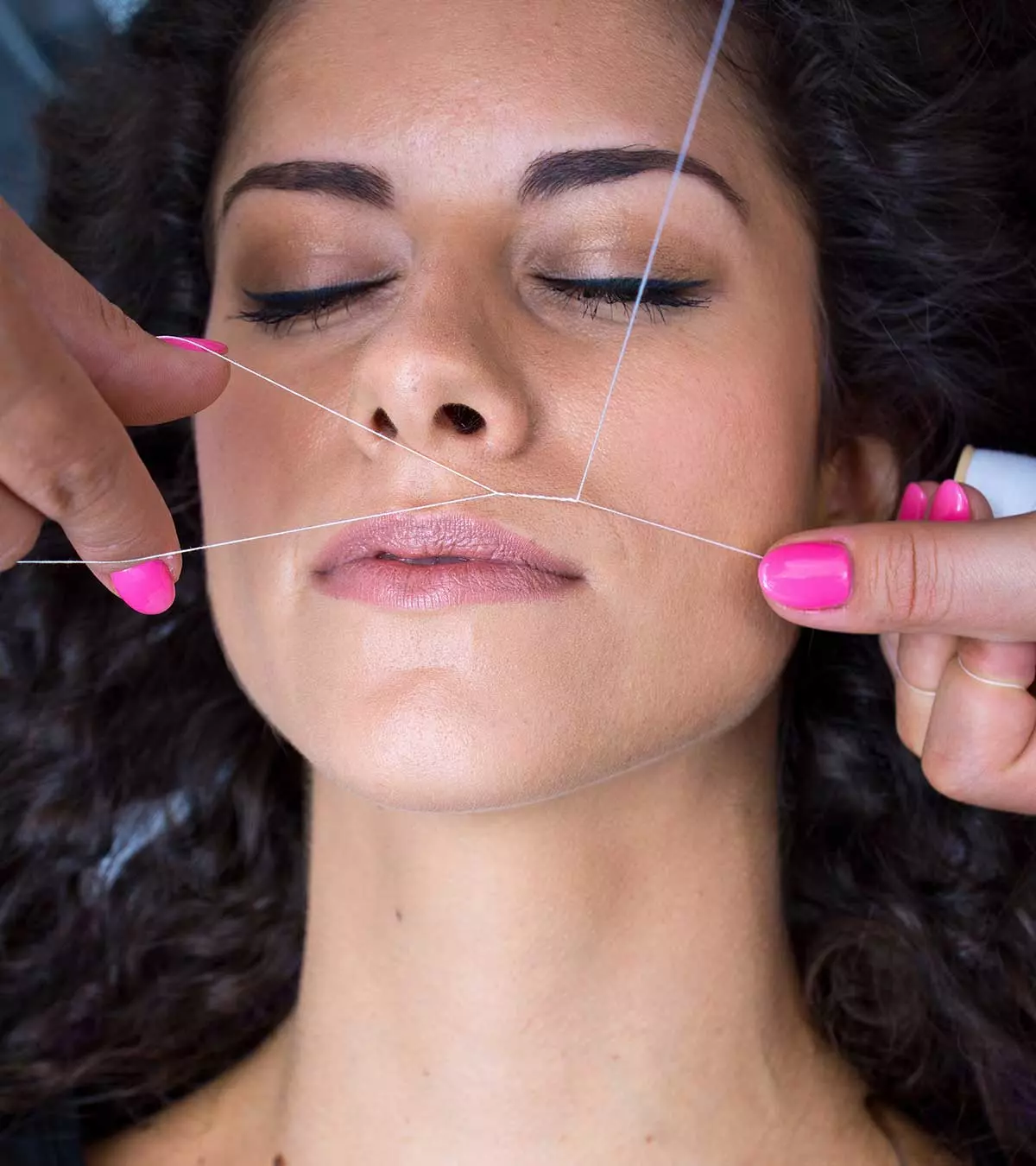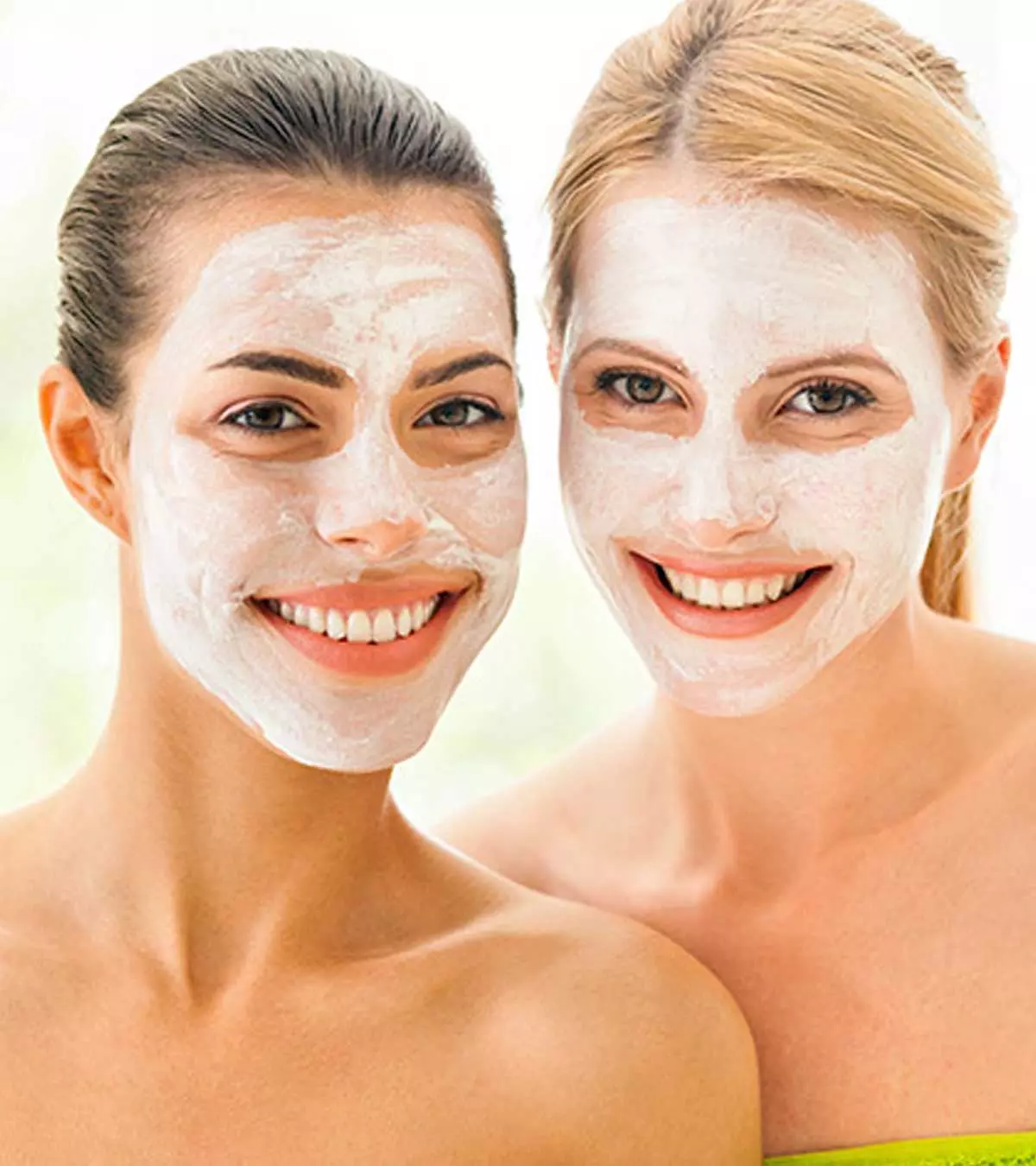
Image: iStock
Homemade face masks for teenagers help them keep their face fresh and healthy. You can pick and choose the ingredients suitable for a given skin type and at the same time avoid harmful chemicals. In the process, you won’t complain about saving on some bucks as well. Whether your teen has dry skin, oily skin or normal skin, you can try natural ingredients to cater to their specific needs. The fact that these ingredients are ubiquitous and easily available makes these masks a hit with teenagers. To have healthy skin, it’s essential to maintain its pH balance and ensure it’s well hydrated. For that to happen, face masks help from the outside but your teenager should take care of their diet and physical activity to ensure a healthy glow reflects from the inside. Here is a list of the best homemade masks for teenagers to take care of their young skin.
Key Pointers
- Homemade face masks are healthier and more affordable than store-bought ones.
- You can create these masks using ingredients from your pantry.
- You can tailor the ingredients to your teen’s specific skin type.
- Using these face masks can help your teen achieve glowing skin.
Homemade Face Masks For Teenagers
What if you could whip up the most effective face masks right from the ingredients in your kitchen? These homemade face masks for teenagers are not only simple to make but also good for your teen’s skin.
1. Simple strawberry face mask
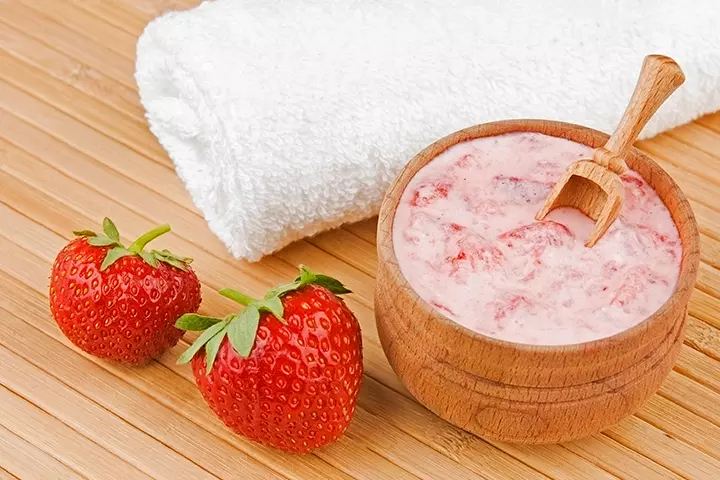
This strawberry mask is great for many reasons- it is suitable for all skin types, and naturally cleanses the skin and the pores, tightens them, and also brightens dull skin by exfoliating dead skin cells. Strawberry is also a rich source of polyphenols, anthocyanins, vitamins, and antioxidants. Moreover, it offers a high level of photoprotectioniReduces the damaging effects of sunlight on skin. (1). Here’s how you can make it:
You will need:
- ¼ cup mashed strawberries
- 1tbsp rice powder
- 3tbsp yogurt
Directions:
Simply mix all the ingredients together in a mixing bowl and apply it directly to the face. Allow it to stay for 20 minutes and then rinse with cool water.
2. Easy baking soda mask
Acne is a common complaint among teens, and using chemical products can only worsen the condition. If you are wondering how to get rid of teenage pimples naturally, one of the solutions could be this baking soda mask. It can effectively reduce the appearance of acne and at the same time, not cause harm to your skin unlike other anti-acne products. Baking soda has a pH between 8 and 9, which makes it great for both skin and hair applications. Moreover, it is affordable and versatile, making it one of the most accessible skincare products (2). Regular application of this face mask can help you possibly get rid of acne.
You will need:
- A few tablespoons of baking soda
- Water
Directions:
Create a simple mixture of baking soda and water and apply it to the face, leaving it on for 20 minutes. Rinse with water and pat dry.
 Quick tip
Quick tip3. Avocado mango face mask
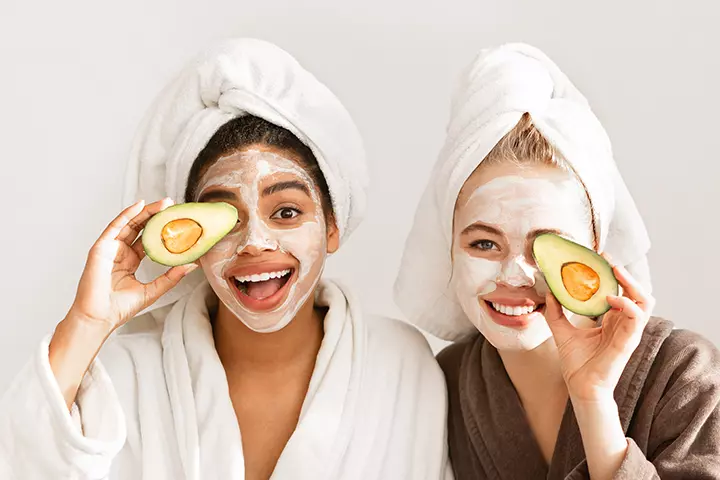
Enriched with the goodness of olive oil, avocadoes and mango, this face mask can turn out to be extremely pampering for the skin. Both mango and avocados used in various forms are considered great for skin (3) (4). Olive oil nourishes and hydrates the skin, leaving it soft and supple, while avocado is perfect for sensitive skin as well thanks to its ability to calm down inflammation. Follow these steps to make it in a jiffy.
You will need:
- 2tbsp honey
- 2tbsp avocado
- 2tbsp olive oil
- 1 mango, mashed
Directions:
Mix all the four ingredients in a bowl until a uniform mixture is obtained. Leave it on your face for 15-20 minutes and then rinse off.
Mom and blogger Pamela made an avocado and banana face mask for her daughter’s sleepover and it was a hit. In her blog, Pamela writes, “I liked this mask because the ingredients were things I already had in my home. It smelled really good (which help convince the girls it was okay to put on their face! It was simple. And boy did it really work (i)!”
4. Refreshing banana face mask
This banana face mask is surprisingly easy to make, and is a great one to try out. Bananas contain antioxidants and polyphenols, both of which are good for healthy skin. Moreover, they are also rich in vitamin E, C, carotene, carotenoids, and flavonoids, which prevent oxidative stress in skin cells (5). Honey is known to be a powerful antimicrobial agent, and discourages the growth of bacteria on the skin, thereby reducing the intensity of many skin problems. Here’s how to make it:
You will need:
- 1 ripe banana
- Juice of an orange/lemon
- 1tbsp honey
Directions:
In a mixing bowl, combine honey and banana, and then add a few drops of lemon/orange juice and mix thoroughly. Apply this face mask and let it stay for 15 minutes, and then wash it off with cool water.
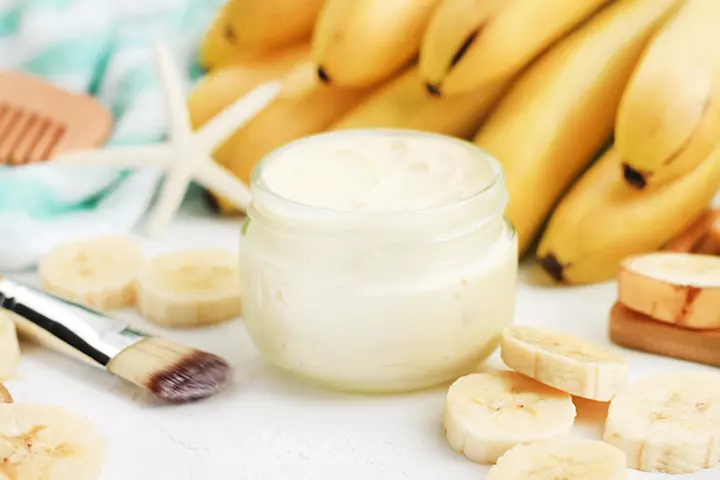
5. Natural blackhead face mask
Blackheads are the second most cause of concern among teens after acne, and surprisingly, it is not difficult to tackle them. This simple and effective face mask will sort it out.
You will need:
- A few drops of lemon juice
- 1tbsp sugar
Directions:
In a mixing bowl, add the juice of half a lemon and 1tbsp of sugar and mix well. Dip a cotton ball into the mixture and rub it on the affected areas in gentle circular motions. Once completely applied, let it dry for 10 minutes. Then wash it off with cold water.
Christine Wallace, a blogger and DIYer, created her own version of this face mask by adding some aspirin, too. In her blog, she writes, “I’m always on a hunt for new cleaners, which can get pricey. I’ve been noticing a lot of au naturale recipes for facial masks, that use basic kitchen ingredients.” She powdered the aspirin and mixed it with lemon juice and sugar. Then she applied it on her face and washed it off after a couple of minutes. She writes, “While washing off the mask the sugar felt nice exfoliating my skin. I shall see how my skin looks in the morning. I hope this helps my skin (ii).”
6. Soothing green tea face mask
One can vouch for the classic green tea face mask with honey for simple and effective results. Scientifically, topical application of green tea extract is effective in treating various skin conditions such as atopic dermatitis, acne vulgaris, and candidiosis, to name a few (6).
You will need:
- 1tbsp green tea (brewed and cooled)
- 2tbsp honey
Directions:
Mix the green tea and honey in a bowl until you get a smooth paste. Clean your face with a gentle cleanser and pat dry. Apply the mask evenly on your face, avoiding the eye area. Leave it on for 15-20 minutes. Rinse off with warm water and pat your face dry.
These homemade face masks for teenage skin aren’t really hard to create, and you could also work on them with your teen. These face masks use natural foods, which benefit your teen’s skin in many ways.
Benefits Of Face Masks For Teenagers
Face masks are highly effective for teenagers. As the face masks available in the market may contain chemicals and be harsh on teenage skin, homemade masks are more beneficial. Teenagers may be prone to acne, oily skin, and sensitivity. Hence, these face masks may provide a homemade solution to their skin problems. Here are some benefits of using face masks for teenagers (7).
- Helps control acne and pimples
Many teens struggle with acne and breakouts due to hormonal changes. Face masks can help absorb excess oil and open pores, thus reducing acne and breakouts.
- Hydrates and moisturizes
Teen skin needs special hydration and moisturization to keep it smooth and supple. Face masks with honey and aloe vera can provide deep hydration and also help oily skin maintain balance.
- Soothes irritation and redness
Ingredients like aloe vera and cucumber can help calm irritated skin and inflammation. This is highly beneficial for sensitive teenage skin.
- Boosts confidence
Following a healthy skincare routine can boost your teen’s confidence and self-esteem. They start feeling more confident about their appearance and take care to maintain it.
- Provides a routine
Teens can have a hectic lifestyle full of studies and peer activities. A skincare routine can act as a de-stressor and provide them with a routine to unwind from other activities.
Precautions To Take While Using Face Masks
Homemade face masks are made from ingredients available in your kitchen. Hence, they are significantly less reactive than those available in the market. Even so, there are some precautions that you must take before using a face mask for teenagers.
- Choose the right face mask for your skin type
Choosing the right face mask for your skin type will help your skin glow. The correct face mask should hydrate and moisturize your skin without irritating it. For instance, you can use clay masks if you have oily skin. Use honey or aloe vera for dry skin; you can use face masks made from cucumber and baking soda for sensitive skin.
- Do a patch test
This is an essential step before putting a mask on your face. Apply a small amount of the mask to your inner wrist, inner elbow, or behind your ear. Wait for 24 hours and check for redness, irritation, and inflammation.
- Clean your face before application
Wash your face well with a gentle cleanser and water to remove dirt and oil before applying the face mask. Ensure your face is damp and not completely dry before using so your skin can absorb the ingredients more effectively.
- Avoid the lip and eye areas
These areas can get easily irritated as they have delicate skin. If you wish to exfoliate your lips, make sure they are well-moisturized before applying a mask. If you have broken skin, avoid using face masks on the area, too.
- Keep on only for recommended time
Do not leave on the mask for long periods of time. Moreover, if you feel a tingling or burning sensation, remove the mask immediately. Some masks dry out quickly (such as clay masks) and may cause irritation to the skin when they are scrubbed out.
- Moisturize after use
Applying a face mask is just a part of your skincare routine. After you remove the mask, make sure you moisturize your skin with a light moisturizer.
- Do not overuse
While face masks make your skin look better, overusing them may strip the natural oils from your skin. Depending on your skin type, you can use face masks one to three times a week. If you are unsure, consult a dermatologist before proceeding.
Frequently Asked Questions
1. Is multani mitti good for a teenage girl?
Multani mitti or fuller’s earth clay is known for its exfoliating properties on the skin and also helps clear clogged pores. Thus, it can be considered a good addition to a teenager’s skincare regime.
2. How do teenagers exfoliate their skin?
Teenagers can exfoliate their skin mechanically or with the help of chemical products. In the mechanical process, a wet washcloth is used to wipe the face that helps clear the dead skin cells. On the other hand, products containing alpha and beta hydroxy acids also help clear the skin and make it radiant.
3. Can homemade face masks be harmful to teenage skin?
Generally, homemade face masks are safe as they contain no harmful chemicals. However, one must consider skin type before adding ingredients like lemon juice, baking soda, or essential oils. They might react differently to people with sensitive skin, so it is advisable to use them in moderation and perform a patch test on a small skin area to check for any adverse reaction.
4. How often should teenagers use a homemade face mask?
How frequently a teenager should use a homemade face mask depends on various factors, including their specific skin needs, the ingredients used in the mask, and any underlying skin conditions they may have. However, face masks are generally recommended to be used once or twice a week.
5. Can a homemade face mask replace professional skin treatments for teenagers?
A homemade face mask can be beneficial to a teenager’s skincare routine. However, it can’t entirely replace professional skin treatments. Professional skin treatments, such as those performed by dermatologists, offer specialized and targeted therapies that may be necessary for specific skin concerns or conditions, such as severe acne and hyperpigmentation.
6. What are the benefits of using homemade face masks?
Homemade masks provide multiple benefits for teenagers. They use natural ingredients free of harmful chemicals, ensuring safety and nourishment. Additionally, they’re budget-friendly, allowing for skin care without high costs. Lastly, you can customize these masks to meet individual skin types and needs.
7. Can I mix multiple homemade masks?
While it might be tempting to mix several masks, it’s advisable to test one at a time to monitor your skin’s reaction. Each mask offers distinct benefits and may have ingredients that could irritate if combined.
If you have a teen at home, you know how important it is for them to get rid of blackheads, whiteheads, and blemishes to have glowing, flawless skin. To help them out, you may suggest they try these simple homemade DIY face masks. These simple homemade DIY face masks for teenagers can be prepared using quick supplies easily available in your home. Moreover, they are made of natural, safe ingredients such as fruits, yogurt, and honey. So, go ahead and select a face mask suitable for your teens’ skin and add it to their self-care routine which will help them attain healthy and refreshing skin. You can also explore more skin care tips for teens to keep skin problems at bay.
Infographic: Easy Homemade Masks For Teenagers
The teenage years can be rough on the skin for many people, but you can maintain your skin healthy and fresh by applying these homemade face masks. Explore this infographic to learn about homemade face masks created using simple ingredients. Save and share it with your friends too! Illustration: Momjunction Design Team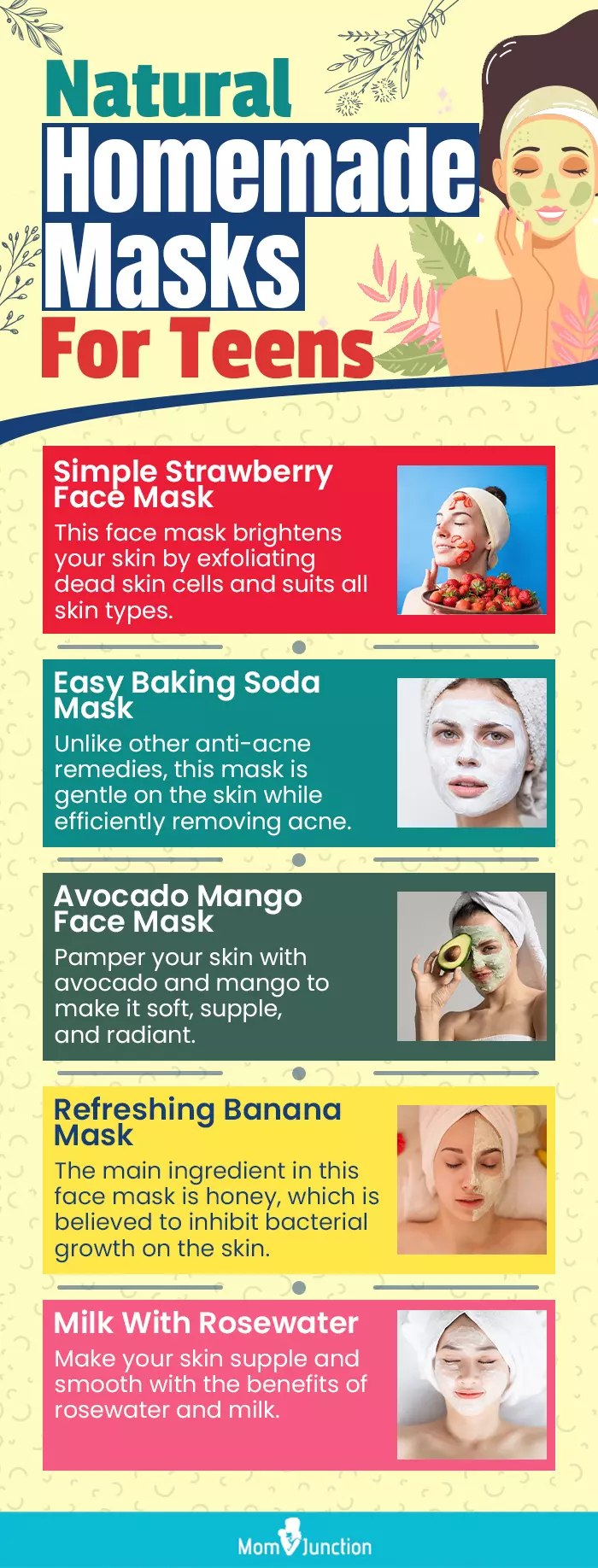
Illustration: Simple Homemade Face Masks For Teenage Skin
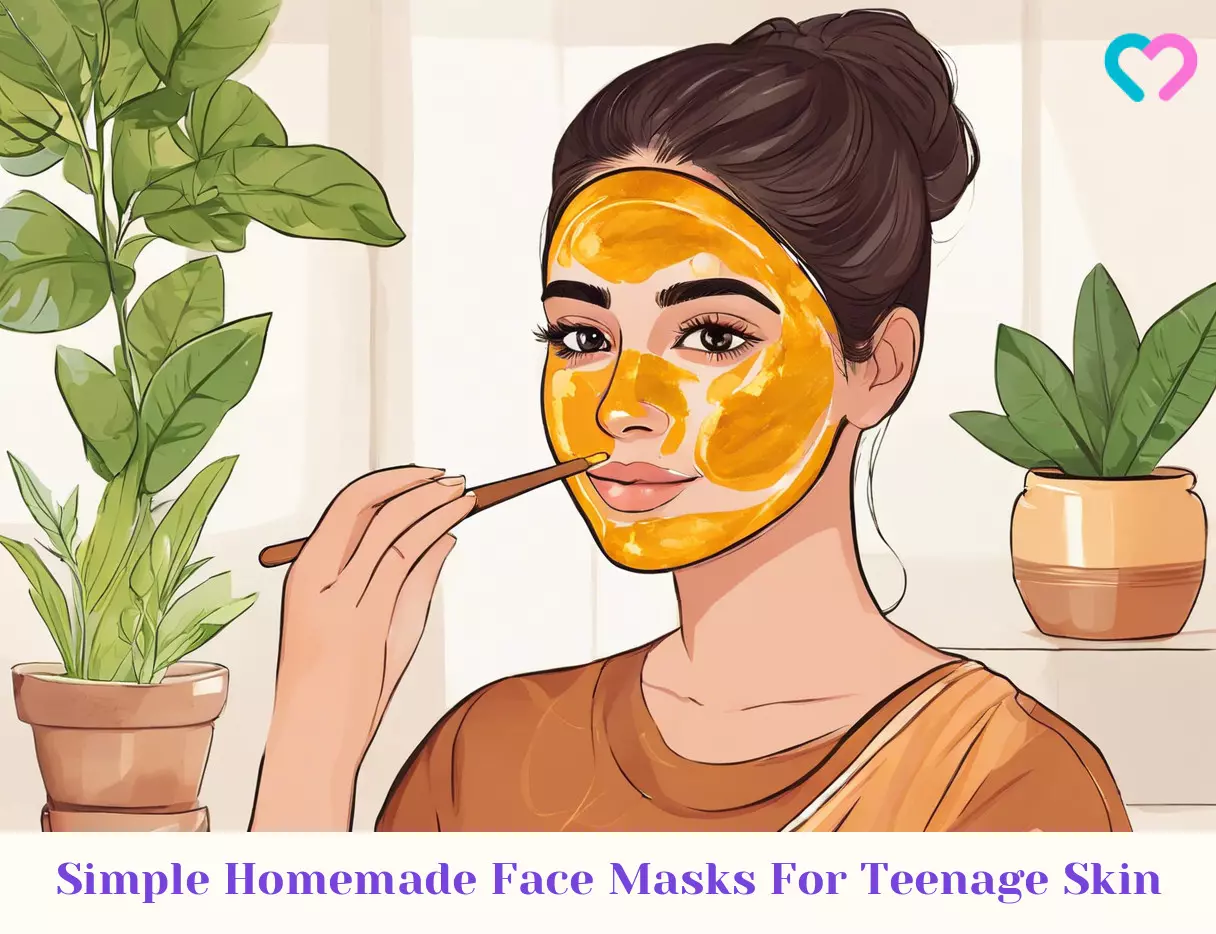
Image: Stable Diffusion/MomJunction Design Team
Personal Experience: Source
MomJunction articles include first-hand experiences to provide you with better insights through real-life narratives. Here are the sources of personal accounts referenced in this article.
i. Homemade Facial Mask: Faux Sleepover Party.https://theysayitsmylife.blogspot.com/2013/03/homemade-facial-mask-faux-sleepover.html
ii. DIY Facial Mask.
https://365daysofdiy.blogspot.com/2012/09/diy-facial-mask.html
References
- Massimiliano Gasparrini, et al.; (2015); A Pilot Study of the Photoprotective Effects of Strawberry-Based Cosmetic Formulations on Human Dermal Fibroblasts.
https://pmc.ncbi.nlm.nih.gov/articles/PMC4581226/ - Carline Dugué, et al.; (2024); Baking Soda and the Skin: A Review of Baking Soda in Dermatology.
https://www.jintegrativederm.org/article/122501-baking-soda-and-the-skin-a-review-of-baking-soda-in-dermatology - Ratna Hapsari Tri Mustika Dewi, et al.; (2024); The Potential of Avocado Oil for Topical Use: A Narrative Review.
https://www.researchgate.net/publication/381939597_The_Potential_of_Avocado_Oil_for_Topical_Use_A_Narrative_Review - Vivien W Fam, et al.; (2020); Prospective Evaluation of Mango Fruit Intake on Facial Wrinkles and Erythema in Postmenopausal Women: A Randomized Clinical Pilot Study.
https://pmc.ncbi.nlm.nih.gov/articles/PMC7694217/ - Surinawati Shahdan; (2024); Phenolic Content and Antioxidant Capacities at Different Stages of Berangan Banana Ripening.
https://www.researchgate.net/publication/387440551_Phenolic_Content_and_Antioxidant_Capacities_at_Different_Stages_of_Berangan_Banana_Ripening - Nader Pazyar et al.; (2012); Green tea in dermatology.
https://pubmed.ncbi.nlm.nih.gov/23346663/#:~:text=Topical%20application%20of%20green%20tea - Do Face Masks Really Work? The “Magic” Behind Face Masks — and How to Get the Most Out of Them.
https://www.pennmedicine.org/updates/blogs/health-and-wellness/2020/march/the-magic-behind-face-masks
Community Experiences
Join the conversation and become a part of our nurturing community! Share your stories, experiences, and insights to connect with fellow parents.
Read full bio of Simone De Vlaming
Read full bio of Harshita Makvana
Read full bio of Deepa Thomas
Read full bio of Deyasini Biswas








